Last Updated on January 19, 2025 by Falcone Dulce
The song “Red Bird” famously proclaims, “My mother told me when I was a child that red birds are like brilliant diamonds in the natural world, their vivid red feathers striking out against the rich green backdrop in the great expanse of North America.” The crimson bird’s flight is a mysterious emblem as much as a visual feast. Often said is, “When a red bird flies, close your eyes and make a wish.” Unlike the camouflage techniques used by other animals, red birds’ vivid plumage serves both exterior expression and communication. The vivid red feathers of the male red birds attract possible mates and send strong messages to rivals, therefore highlighting their significance in this dynamic and varied ecology.
Why the birds are red?
The bright red color of red birds comes from carotenoids, which are pigments that they get from the food they eat. These colors don’t come from the birds themselves; they come from the bugs, flowers, and seeds they eat. Many birds have bright red, orange, and yellow feathers that are caused by carotenoids. Carotenoids are also very important for birds to use when they are mating or defending their territory.
Red birds which are male, like the Northern Cardinal and the Scarlet Tanager, often have brighter red feathers than red birds which are female. The bright feathers of males are a sign of health and vigor, so this sexual difference is very important. Potential mates are often more interested in a male with bright red feathers because it shows that he has access to good food and has been able to stay away from predators and diseases. In this way, the red coloring acts as a visual advertisement of genetic fitness, which raises the chances of reproduction success.
On top of that, the bright red feathers can keep competitors away. In many species, a male’s striking look can mean that he is strong and dominant, which makes it less likely that he will fight with another male. Competitors may think twice before taking on a bird that looks healthy and happy, which helps the red bird establish and protect its area better.
It’s interesting that the red color can also help them hide in some places. For example, a red bird may be able to fit in better than a less colorful bird in places with lots of red or orange flowers. This lets it get closer to food sources without being easily seen by predators. The fact that coloration serves two purposes—to attract mates and to stay alive—shows how complicated the relationship between beauty and life is in the world of birds.
Let’s look at some of the common red bird species found in North America!
Northern Cardinal
The Northern Cardinal is likely the most recognizable red bird in North America. This bird, with its beautiful red feathers and unique crest, is a beloved choice for birdwatchers. The males showcase a lively red, whereas the females display a gentle brown with lovely red highlights. Northern Cardinals are famous for their lovely songs and calls, frequently enjoyed in gardens and woodlands. They are monogamous and often create strong pair bonds, which makes them a lovely symbol of love and fidelity.

Scarlet Tanager
Undoubtedly, the Scarlet Tanager is one of nature’s wonders, widely recognized as a jewel of eastern North American woodlands. Males, with their bright scarlet plumage, are magnificent, especially when perched against the rich green foliage. Their black wings and tail provide a striking contrast, making them clearly visible from a distance. This vibrant hue isn’t only for show; it also helps attract partners throughout the mating season.
Females, on the other hand, have a more muted yellowish-green color that provides excellent camouflage amid the leaves and branches. This pigmentation allows them to blend in with their environment, keeping them safe from predators while they nest and raise their young. The female’s ability to remain hidden is critical, particularly during the delicate nesting time.
Deciduous and mixed forests commonly host Scarlet Tanagers, who prefer areas with an abundance of trees and an open canopy. High in the treetops, we frequently observe them foraging for their favorite foods, primarily insects but occasionally including fruits like berries. Their food reflects their versatility, which allows them to survive in a variety of settings.
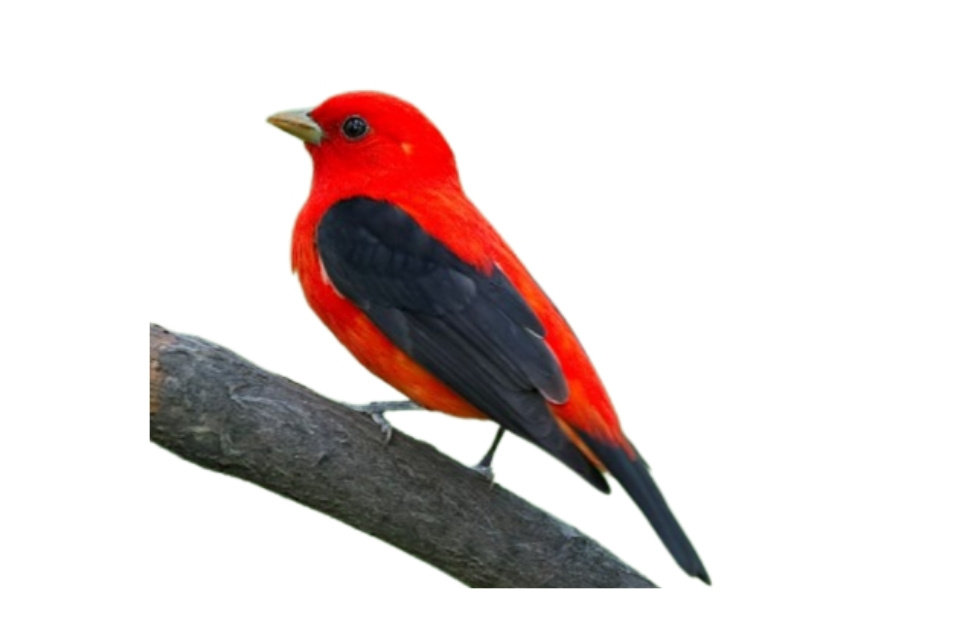
Summer Tanager
The Summer Tanager is a bird that looks and acts like summer. Its bright red feathers make you think of hot days and plants in bloom. When compared to other tanagers, which often have a mix of colors, the male Summer Tanager is a bright red that stands out and makes you think. This bright color not only makes them stand out among birds, but it also represents life and happiness, which is very fitting for this time of year.
The soft yellow of the females makes them stand out from the males in a beautiful way. Their colors are like the light flowing through the leaves in the early morning. The way they are colored reminds us of how fragile nature is and how important every shade is for life. The males are more striking, but the females’ quiet beauty shows how delicate life is in the bush.
This summer, tanagers have become adept at handling insects due to their fondness for bees and wasps. They are excellent at catching these tasty flying treats in the air, which shows how agile and flexible they are. Their unique diet allows them to thrive in areas where other tanager species cannot, demonstrating their ecological niche importance.
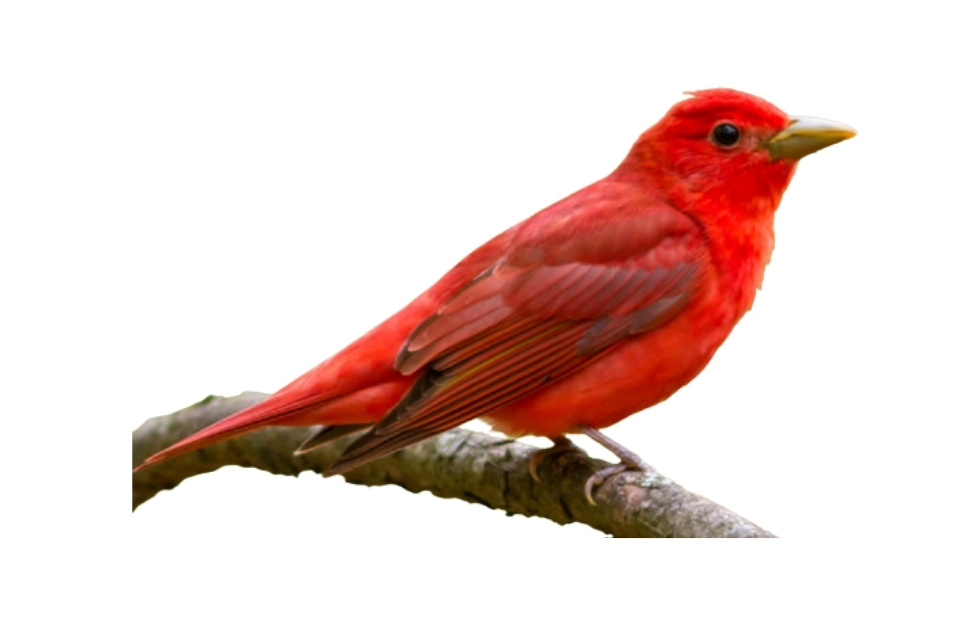
Hepatic Tanager
On the avian landscape of North America, the Hepatic Tanager is a bird that is not as well-known but is nonetheless captivating. It adds a touch of warmth and mystery to the scene. The males are equipped with a plumage that is a deep reddish-brown color and frequently appears to shimmer with touches of orange, especially when the sun is shining. Their unique coloring sets them apart from their more brightly colored relatives, creating a subtle elegance that invites closer examination. Females, in contrast, are enveloped in softer, yellowish tones, which not only provide them with excellent camouflage among the foliage but also reflect the mellow light filtering through the trees.
The pine and oak woodlands of the southwestern United States and certain regions of Mexico are the primary habitats with which these tanagers can be found. Their preference for these environments allows them to thrive in biodiversity-rich areas. When it comes to foraging, the Hepatic Tanager is a skilled forager who may frequently be observed darting between trees in quest of berries and insects. Their ability to adapt to different surroundings is demonstrated by the fact that they consume a diverse diet because they make use of food sources that are seasonal. In addition to adding a lovely dynamism to the forest ecology, the sight of a hepatic tanager searching for insects or sampling ripe berries brings attention to the role that these birds play in preserving ecological balance when they are seen.
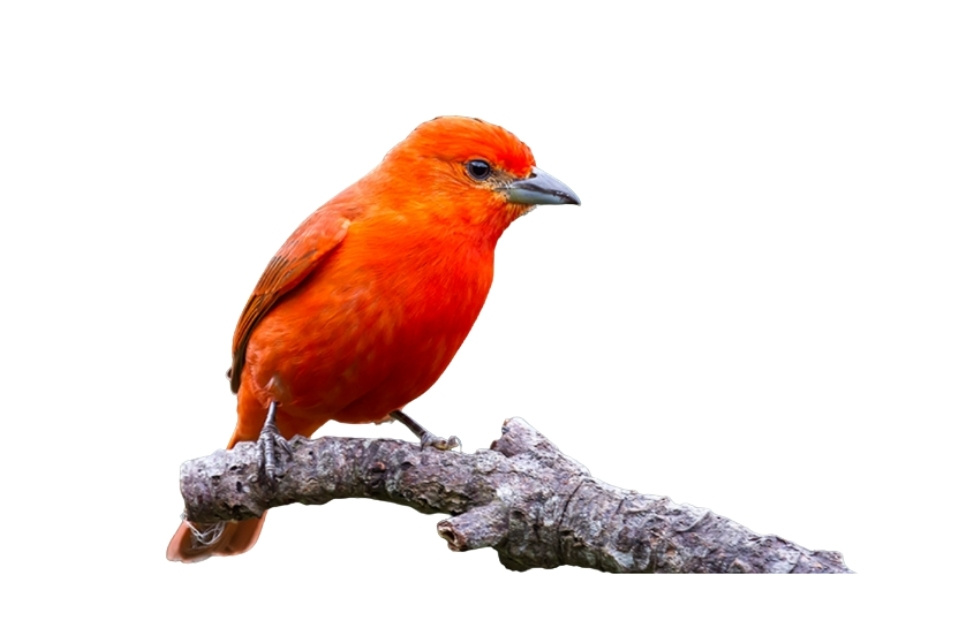
Vermilion Flycatcher
The Vermilion Flycatcher is a small but beautiful bird. Its bright colors and lively behavior make it stand out. Males stand out because their bright red feathers, which contrast strongly with their dark wings and back, give them an intense look. This bright coloring is not only beautiful to look at, but it is also crucial for finding mates during breeding season. When the male is high on a branch, his bright color stands out against the background, creating a bright spot in open areas.
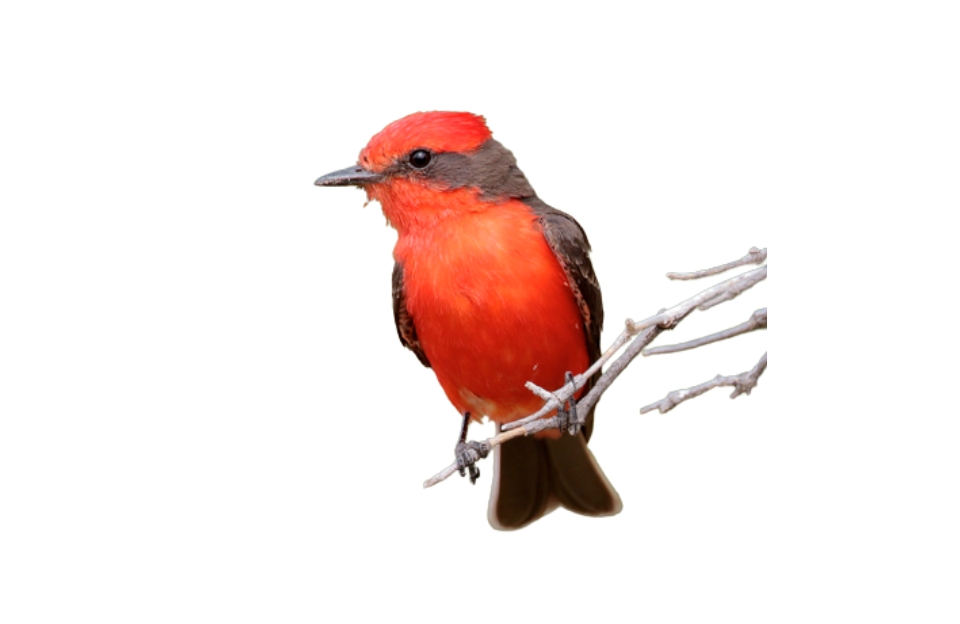
Pine Grosbeak
The Pine Grosbeak is a strong bird that thrives in pine woodlands. Males have a gorgeous rosy red color, while females have a charming yellowish-gray tone. People note these birds for their pleasant, friendly personalities and lovely, gentle songs. They mostly consume seeds, fruits, and berries and frequently forage in groups throughout the winter months, providing a charming image against the snowy backdrop.
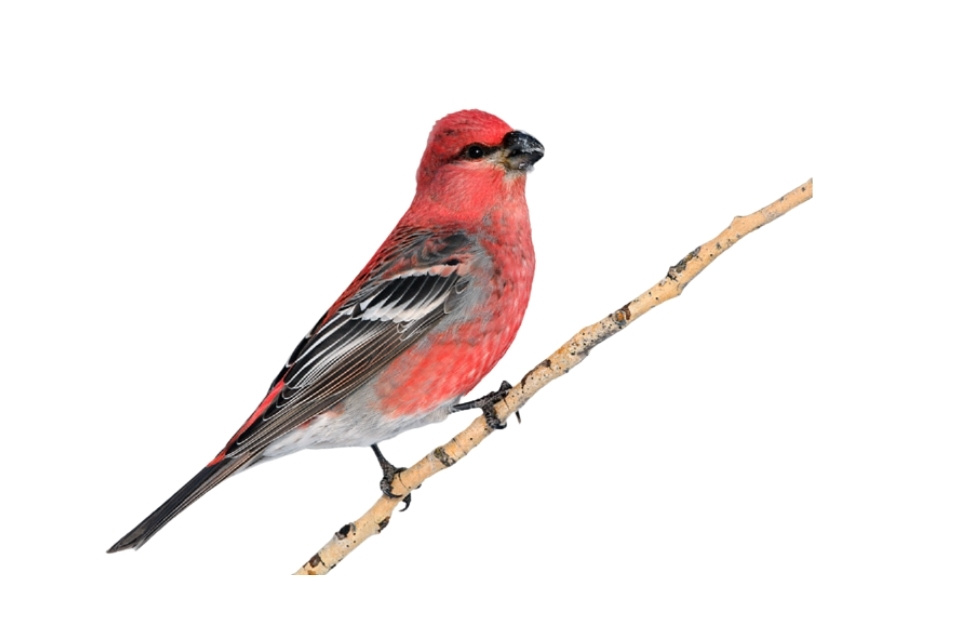
Red Crossbill
The distinctive crossed mandibles of the Red Crossbill, which aid it in removing seeds from pine cones, easily distinguish it. Males are blazing red, and females are more yellowish-green. Bird watchers frequently spot these sociable birds in groups, their peculiar sounds ringing across the forest. Their versatility to various environments and food sources makes them an intriguing topic for bird watchers.
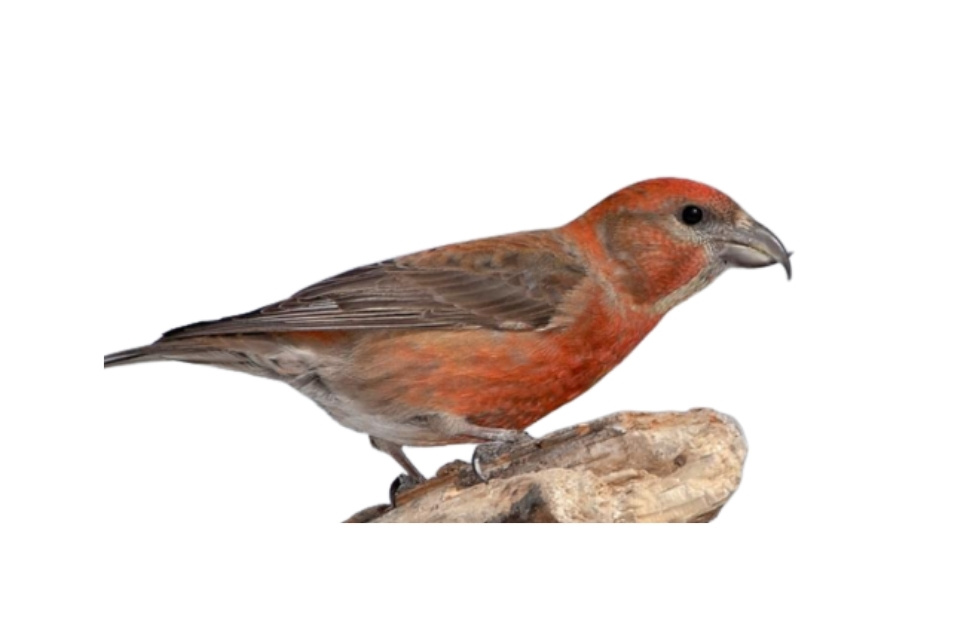
White-winged Crossbill
The White-winged Crossbill, like the Red Crossbill, has a crossed bill that allows it to access seeds in pine cones. Males are bright red with distinctive white wing bars, while females are more muted in appearance. Commonly found in boreal forests, they are known for their migratory nature, actively seeking food sources as they become available. Their lovely, melodious sounds provide a delightful quality to their presence in the wild.
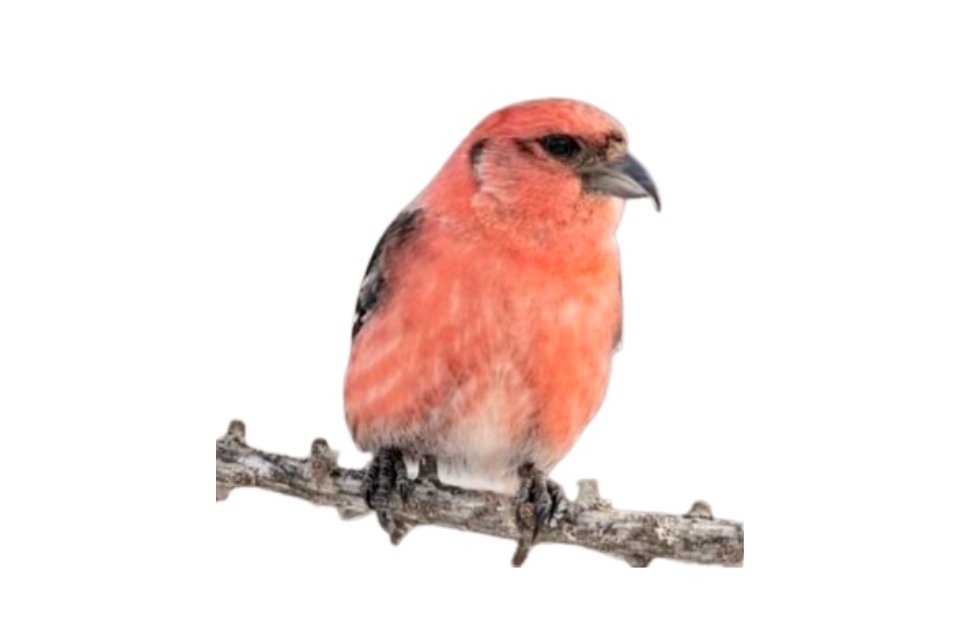
Final Thoughts
Red birds, with their eye-catching plumage and colorful presence, are a fascinating part of the avian world. Scarlet Tanagers, Summer Tanagers, Hepatic Tanagers, and Vermilion Flycatchers all contribute distinct features, habits, and ecological responsibilities to their respective surroundings. The brilliance of their colors is frequently used as a visual signal in mating rituals, and their songs contribute to nature’s symphony, improving the overall experience of the places they inhabit.
These birds are not only gorgeous, but they also perform an important function in their ecosystems, regulating bug populations and dispersing seeds. Their adaptation to foraging and nesting tactics demonstrates their resilience in the face of environmental change. However, many red bird species are under threat from habitat loss and climate change, emphasizing the necessity of conservation efforts to conserve their ecosystems.
Seeing red birds can generate feelings of joy and wonder, reminding us of nature’s exquisite beauty and the connectivity of all living things. As we appreciate these lively creatures, we are also obligated to campaign for their preservation, ensuring that future generations can see and hear these wonderful birds in their natural habitat. In recognizing red birds, we acknowledge the diversity of life and the critical role that each species plays in the tapestry of existence.

Fine news for all us
Thanks, we will continue working on this!
then only a few have reached us